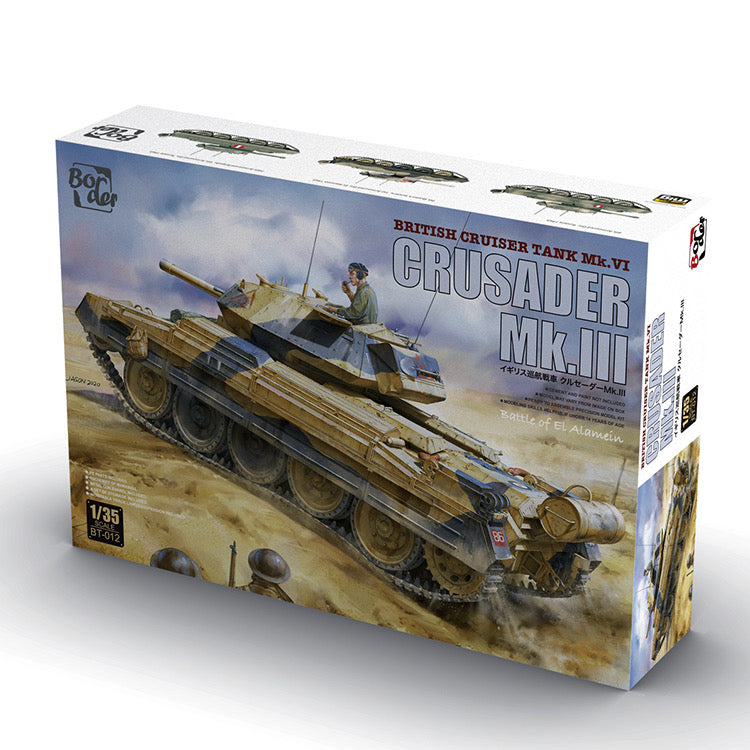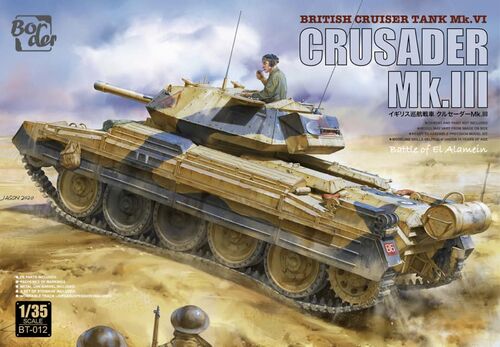Description
SURPRISE !! FREE GIFT WITH THIS KIT
Features of this kit:
- PE parts included
- Metal gun barrel included
- 5 Schemes of markings
- A set of stowage included
- Workable track links and suspension included
The Crusader was a British tank of the Second World War. The first prototypes were built in 1939, and serial production continued in 1940-1943. In total, about 4,900 copies of this tank were built. Crusader was powered by an engine Nuffield Liberty Mk II with 340 hp. The vehicle was armed with - depending on the version - a single 40mm QF 2-pounder cannon or a single 57mm QF 6-pounder cannon and two 7.92mm and 7.7mm machine guns.
Tank Crusader was constructed as a successor to the failed Convenanter A13 car. First of all, the new tank was more carefully designed, which meant it had a much lower failure rate than its predecessor. The armor has also been improved. Despite these changes The Crusader, when it entered service, still had too weak armor, and above all, too weak weapons to fight enemy tanks. Its strengths include the aforementioned low failure rate and good mobility. Nevertheless, after the end of the North African campaign (1940-1943) in which the Crusader tanks played a major role, they were systematically and quickly withdrawn from the frontline units. Several versions of this tank were created in the course of serial production. Chronologically, the first was the Crusader I, which was the first mass-produced version of this tank. In May 1942, the Crusader III version made its debut, with a new 57mm gun and 51mm reinforced armor. After 1943, numerous specialist vehicles based on the Crusader chassis were built, such as the Crusader II Gun Traktor or the Crusader III AA Mk. I and II. Crusader tanks found themselves in the Free French, Australian and New Zealand units. They also became part of the equipment of the Polish Armed Forces in the West (PES).






